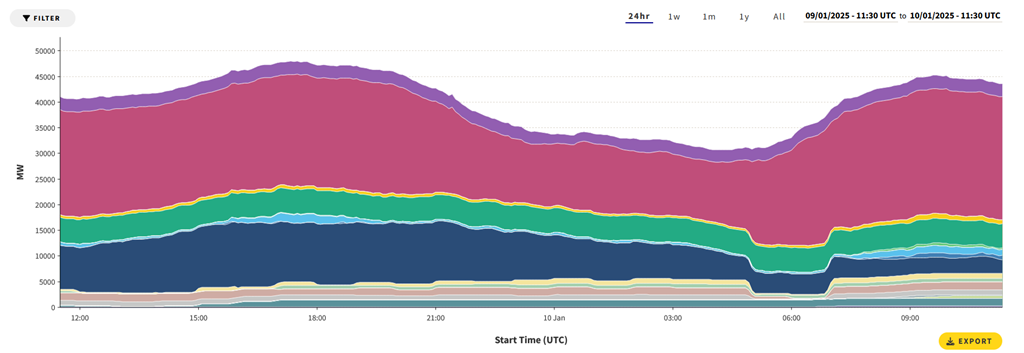By P Gosselin
Two brief periods of wind doldrums and Germany’s power supply reaches its limits …
German Chemical Industry Association: “It’s desperate.”
By Prof. Fritz Vahrenholt
From November 2 to November 8 and from December 10 to December 13, Germany’s electricity supply from renewable energies collapsed as a typical winter weather situation with a lull in the wind and minimal solar irradiation led to supply shortages, high electricity imports and skyrocketing electricity prices.
At times, over 20,000 MW, more than a quarter of Germany’s electricity requirements, had to be imported. Electricity prices rose tenfold (93.6 €ct/kWh). Companies that did not have long-term contracts had to cease production. Wolfgang Große Entrup, Managing Director of the German Chemical Industry Association (VCI): “It’s desperate. Our companies and our country cannot afford fair-weather production. We urgently need power plants that can step in safely.”
The reason: The socialist/green led coalition government and the prior Merkel governments had decommissioned 19 nuclear power plants (30% of Germany’s electricity demand) and 15 coal-fired power plants were taken off the grid on April 1, 2023 alone. 4.35 billion euros of taxpayers’ money in decommissioning premiums were distributed to RWE and LEAG (East Germany). In January 2025, RWE’s Weisweiler power plant will go offline. This, of all months, will occur in January, when electricity consumption in Germany is at its highest and France may have little to supply. This is because France is the most heat-sensitive country in Europe and even small fluctuations in temperature can have an impact on electricity consumption due to the widespread use of electric heating systems. 1 degree Celsius less and consumption in France increases by 2400 megawatts!

But Germany’s misguided energy policy of switching off secure power is now also causing our neighbors to have economic difficulties. Southern Norway, southern Sweden, Austria and the Netherlands saw similarly high electricity prices as Germany did during the dark doldrums (see chart above, the figures are in €/MWh, to convert to €ct/kWh, you have to divide by 10).
Denmark, whose electricity supply is also based on wind power (56%), also exacerbated the malaise there by importing electricity from Scandinavia.
Norway’s energy minister in the center-left government, Terja Aasland, wants to cut the power cable to Denmark and renegotiate the electricity contracts with Germany. He is thus responding to the demands of the right-wing Progress Party, which has been calling for this for a long time and will probably win the next elections. According to the Progress Party, the price infection from the south must be stopped.
Swedish Energy Minister Ebba Busch was even clearer: “It is difficult for an industrial economy to rely on the benevolence of the weather gods for its prosperity.” And directly to Habeck’s green policy: “No political will is strong enough to override the laws of physics – not even Mr. Habeck’s.”
It is also often forgotten that wind turbines consume electricity when they are stationary or switched off. This is because all technical components (oil pumps, fans, control systems, etc.) must remain in operation even when they are still. Vestas specifies an electricity consumption of 55,000 kWh per year for a 4.2 MW turbine at standstill. During production times, the turbine supplies itself with electricity. But it is virtually idle 120 days a year.
If we assume an average self-consumption of 40,000 kWh per year for all German turbines, we arrive at 1.2 terawatt hours, the generation of a medium-sized gas-fired power plant To apply this to our dark, windless doldrums: to supply the wind turbines, a power plant with around 400 MW would have to run or the same output would have to be imported for days on end to prevent the wind turbines from going down.
Complete article at Klimanachrichten.
Related
Discover more from Watts Up With That?
Subscribe to get the latest posts sent to your email.







Leave a Comment